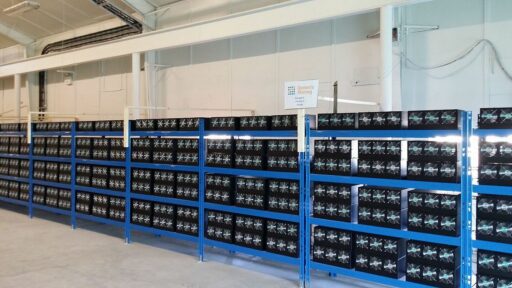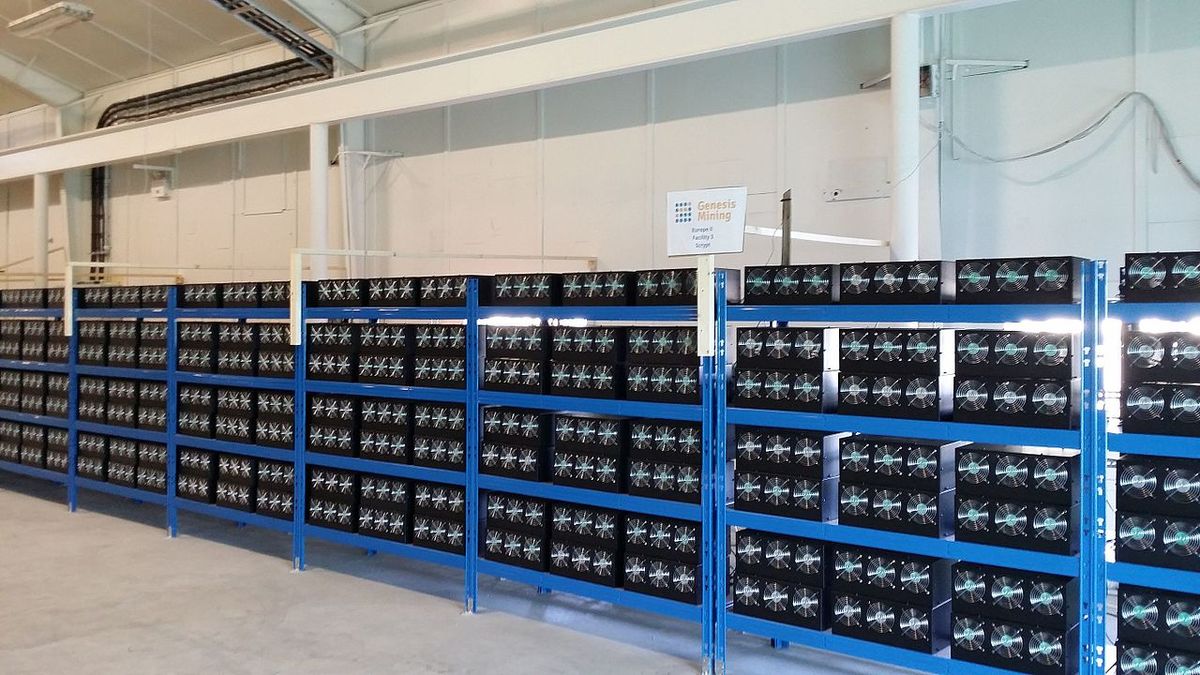The landscape of cryptocurrency mining is undergoing a transformative shift as innovations in mining rigs and technology redefine what it means to mine digital currencies efficiently and sustainably. As we look towards the future, we see a horizon where high-efficiency mining rigs, renewable energy integration, the rise of BlockDAG, data center partnerships, and alternative mining methods are setting the stage for a more accessible and environmentally friendly mining ecosystem.
Key Takeaways
- High-efficiency mining rigs are evolving with specialized hardware, enabling competitive mining while addressing sustainability concerns.
- Renewable energy is becoming integral to crypto mining, with a shift towards green solutions and streamlined integration in mining rigs.
- BlockDAG technology is causing a global mining craze, with predictions of significant market disruption and impacts on traditional mining.
- Miners are increasingly outsourcing operations to data centers, balancing high hash rates with sustainability and cost-saving benefits.
- Mining cryptocurrencies without high-powered rigs is gaining traction, focusing on coins that are resistant to ASIC mining and require only PCs.
High-Efficiency Mining Rigs
The Evolution of Mining Equipment
The journey of crypto mining equipment has been marked by significant advancements, transforming from a hobbyist’s setup to a highly specialized industry. The evolution of mining equipment is a testament to the rapid pace of technological innovation in the crypto space.
- Early mining was done on personal computers, accessible to virtually anyone with a CPU.
- As the difficulty of mining increased, the need for more powerful hardware led to the development of GPUs and FPGAs.
- The introduction of ASIC miners revolutionized the industry, offering unparalleled efficiency and hash rates.
The relentless pursuit of efficiency has not only shaped the design of mining rigs but also spurred growth in related sectors such as semiconductor manufacturing and cooling technology.
Looking ahead, the trend towards sustainability is evident, with manufacturers integrating renewable energy options into their rigs. This shift is a response to environmental concerns and the industry’s recognition of the importance of sustainable practices.
Specialized Hardware for Competitive Mining
The relentless pursuit of efficiency in crypto mining has led to the development of Application Specific Integrated Circuit (ASIC) devices. These specialized mining rigs are engineered to perform one task: solve cryptographic equations like the SHA-256 algorithm, which is central to Bitcoin mining. Their introduction has significantly raised the bar for what constitutes competitive mining hardware.
- Early ASIC miners were thousands of times more powerful than GPU-based systems.
- ASICs have contributed to mining centralization, prompting developers to explore ASIC-resistant algorithms.
- Networks like Zcash, with its Equihash algorithm, favor GPU and PC mining, democratizing access to mining.
The shift from general-purpose hardware to ASICs has not only altered the mining landscape but also sparked a debate on mining centralization versus accessibility. The market continues to adapt, with some platforms rejecting the ASIC model in favor of GPU mining, thus lowering barriers to entry and making mining more inclusive.
Sustainable Mining Rigs: A New Generation
The landscape of cryptocurrency mining is undergoing a transformative shift with the advent of sustainable mining rigs. These rigs are designed to deliver high hash rates while minimizing environmental impact, aligning with the growing societal demand for eco-friendly technologies.
The new generation of mining rigs not only prioritizes energy efficiency but also integrates renewable energy sources, marking a significant step towards a greener mining industry.
Here are some of the key features of sustainable mining rigs:
- Utilization of energy-efficient components to reduce power consumption
- Compatibility with renewable energy sources such as solar, wind, and hydro
- Advanced cooling systems to lower energy use and heat generation
- Modular designs for easy upgrades and reduced electronic waste
As the industry progresses, we can expect to see a surge in mining operations powered by renewable energy, with manufacturers increasingly focusing on sustainability. This evolution is not just a response to criticism but a proactive move to ensure the longevity and social acceptance of cryptocurrency mining.
Renewable Energy Integration in Crypto Mining

Can You Use Renewable Energy for Crypto Mining?
The integration of renewable energy into crypto mining is not only possible but increasingly becoming a standard practice. Miners are capitalizing on the low-cost and sustainability of renewable sources such as wind, solar, hydropower, and geothermal energy. These green solutions offer a way to mitigate the environmental impact of mining operations while also addressing economic concerns.
The shift towards renewable energy is driven by the need for more sustainable and cost-effective mining practices.
Renewable energy sources present an attractive option for miners, especially in regions where these resources are abundant and accessible. Here’s a quick overview of the types of renewable energy used in mining:
- Wind Energy: Harnessing the power of wind to generate electricity, reducing greenhouse gas emissions.
- Solar Energy: Utilizing sunlight to produce energy, offering a clean and abundant power supply.
- Hydropower: Capitalizing on water flow to create energy, often considered the most cost-effective renewable source.
- Geothermal Energy: Extracting heat from the Earth to generate power, providing a stable and continuous energy supply.
As the cryptocurrency industry shifts towards more energy-efficient consensus mechanisms like Proof of Stake (PoS), Delegated Proof of Stake (DPoS), and Proof of Authority (PoA), the embrace of renewable energy in mining operations becomes even more critical. This transition is shaping the future of mining practices, balancing economic viability with environmental responsibility.
The Shift to Green Energy Solutions
The crypto mining industry is increasingly embracing green energy solutions to mitigate its environmental impact. Innovations in renewable energy integration are not only reducing the carbon footprint of mining operations but also presenting new economic opportunities. Miners are now seeking locations with abundant renewable resources or tapping into excess clean energy to power their rigs.
- Relocation to renewable-rich areas
- Utilization of excess clean energy
- Development of smart power grid systems
The transition to green energy is not just an environmental imperative but also a strategic move for the longevity and profitability of mining operations. As the energy mix evolves, the synergy between crypto mining and renewable energy sources becomes more pronounced, leading to a more sustainable and economically viable mining ecosystem.
Streamlining Renewable Options in Mining Rigs
The integration of renewable energy sources into crypto mining rigs is not just a trend; it’s a necessary evolution for the industry’s sustainability. Mining rig manufacturers are now offering solutions that cater to the eco-conscious miner, with rigs designed to be powered by wind, solar, and even wave energy. This shift is crucial as it addresses the environmental concerns associated with traditional mining practices.
Renewable energy sources, such as solar and geothermal, are becoming increasingly popular for powering mining operations. Solar panels, in particular, are a favored choice due to their availability and ease of installation. The move towards renewable energy is also evident in the relocation of mining farms to regions rich in renewable resources, optimizing the use of clean energy.
The future of crypto mining is inextricably linked to renewable energy. As the industry grows, so does the need for sustainable practices that do not compromise on efficiency or performance.
The table below outlines the types of renewable energy sources and their adoption in crypto mining rigs:
| Renewable Energy Source | Adoption in Mining Rigs |
|---|---|
| Solar | Highly Adopted |
| Wind | Moderately Adopted |
| Geothermal | Emerging Adoption |
| Hydro | Emerging Adoption |
By streamlining the integration of these renewable options, mining rig manufacturers are setting a new standard for the industry, one that promises a greener and more sustainable future for crypto mining.
The Rise of BlockDAG in Crypto Mining

BlockDAG Crypto Mining Rigs Cause Global Mining Craze
Amidst the growing landscape of cryptocurrency mining, BlockDAG has sparked a global mining craze, promising substantial returns and a fresh investment opportunity. Analysts are forecasting staggering growth, with a potential 50x increase in 2024 and a 10,000x increase post-launch, positioning BlockDAG as a disruptive force in the market.
BlockDAG’s X-Series crypto mining rigs are at the forefront of this excitement, offering daily earnings of 200 to 2,000 BDAG coins. These rigs are designed for minimal energy consumption and maximum efficiency, revitalizing the crypto mining industry.
The demand for traditional mining assets like Bitcoin and ZCash has seen a decline as investors pivot towards BlockDAG’s lucrative potential. The unique features and growth prospects of BlockDAG make it a standout choice for those looking to capitalize on the industry’s dynamic nature.
Predictions of Market Disruption by BlockDAG
The BlockDAG technology is poised to cause significant market disruption, with analysts predicting substantial growth post-launch. This innovative approach to crypto mining has already demonstrated its potential by raising over $2.4 million in presale, signaling strong investor confidence.
BlockDAG’s rapid development cycle and impending mainnet launch set it apart from competitors, potentially reshaping the landscape of digital finance.
The following table outlines the projected impact of BlockDAG on the crypto mining industry:
| Year | Forecasted Increase |
|---|---|
| 2024 | 50x |
| Post-Launch | 10,000x |
As the crypto mining industry adapts to rising difficulty and market shifts, efficient companies that embrace BlockDAG could maintain profitability and secure a competitive edge. The future prospects for growth and investment opportunities in this sector appear promising, with BlockDAG at the forefront of this evolution.
The Impact of BlockDAG on Traditional Crypto Mining
BlockDAG technology is revolutionizing the crypto mining landscape, challenging the status quo of traditional mining methods. The introduction of BlockDAG’s X-Series mining rigs has shifted the focus towards more energy-efficient and profitable mining operations. These rigs enable miners to earn between 200 to 2,000 BDAG coins daily, which has sparked a global mining craze and affected the demand for established cryptocurrencies like Bitcoin and ZCash.
BlockDAG’s innovative approach to mining is not only enhancing profitability for miners but also contributing to the revival of the crypto mining industry.
The table below illustrates the stark contrast in daily earnings potential between traditional mining rigs and BlockDAG’s X-Series rigs:
| Mining Rig Type | Daily Earnings Potential (Coins) |
|---|---|
| Traditional | 10 – 100 |
| BlockDAG X-Series | 200 – 2,000 |
As BlockDAG continues to gain traction, it is poised to disrupt the market and potentially reshape the future of crypto mining. The implications for traditional mining operations are significant, with a pressing need to adapt to the changing dynamics brought about by BlockDAG’s advancements.
Miners Pivot to Data Centers

Outsourcing Mining Operations to Data Centers
The strategic move to outsource mining operations to data centers has become a pivotal trend in the crypto mining industry. Miners are increasingly turning to cloud mining platforms to rent hash power, thereby eliminating the need for substantial upfront investments in hardware. This approach not only offers accessibility and scalability but also leads to significant cost savings and operational efficiency.
Data centers provide an optimal environment for mining, especially in regions where climate conditions are not conducive to running mining rigs efficiently. For instance, in areas with high temperatures and humidity, cooling costs can drastically cut into profits. By leveraging the specialized infrastructure of mining facilities, miners can enjoy the benefits of a controlled environment designed to maximize mining output.
The integration of renewable energy options into mining rigs is a developing trend that promises to reshape the future of mining operations. As manufacturers innovate, we can anticipate a surge in mining farms powered by sustainable sources like wind, sun, and wave power.
The collaboration with data centers also opens up diversification opportunities for miners. It allows them to participate in the mining process without the risks associated with physical hardware management, such as maintenance and obsolescence.
Balancing High Hash Rates with Sustainability
The quest for high hash rates is often at odds with the goal of sustainability in crypto mining. However, recent advancements in mining rig technology are bridging this gap. Manufacturers are now offering rigs that not only boast impressive hash rates but also prioritize energy efficiency. This dual focus is a response to the growing concerns over the environmental impact of crypto mining and the push for more sustainable practices.
Mining pools have emerged as a strategic solution to balance the need for competitive hash rates with the desire for sustainability. By pooling resources, miners can share the rewards while also reducing individual power consumption and carbon footprint. Here’s how mining pools contribute to sustainability:
- Shared Resources: Miners combine their computational power, leading to more efficient use of energy.
- Reduced Waste: Collective mining reduces the redundancy of effort and energy expenditure.
- Economies of Scale: Larger, collective operations can invest in more efficient, sustainable technology.
The integration of renewable energy sources, such as solar power, further enhances the sustainability of mining operations. With the addition of battery storage, miners can achieve a new level of energy independence, making the entire process more eco-friendly.
As the crypto mining landscape continues to evolve, strategies that incorporate efficient equipment, adapt to increasing difficulty, and explore alternative reward systems like liquidity mining are becoming essential for maintaining profitability and sustainability.
The Cost-Saving Benefits of Data Center Partnerships
Partnering with data centers has emerged as a strategic move for crypto miners looking to optimize their operations while minimizing costs. By outsourcing to specialized facilities, miners can significantly reduce the capital and operational expenses associated with running high-powered rigs.
-
Climate Control: In regions with adverse climates, maintaining optimal temperatures for mining rigs can be costly. Data centers offer a controlled environment, ensuring hardware longevity and efficiency.
-
Economies of Scale: Large-scale operations at data centers result in lower electricity rates and operational costs due to bulk pricing and specialized infrastructure.
-
Maintenance and Upgrades: Data centers provide professional maintenance and timely hardware upgrades, which can be more cost-effective than individual miners attempting to keep pace with technology.
The synergy between miners and data centers not only streamlines the mining process but also introduces a level of financial predictability, crucial for long-term planning and profitability.
Mining Cryptocurrencies Without High-Powered Rigs

Mine Coins That Require PC Only
In the pursuit of cost-effective crypto mining, sticking to cryptocurrencies that don’t require GPU or ASIC mining rigs is a savvy strategy. These coins often employ methods to thwart the use of high-powered rigs, ensuring a more accessible mining landscape for individuals with standard PCs. For instance, Monero is engineered to be resistant to ASIC mining, embodying the principle of decentralization and equal opportunity in the mining process.
Developers are innovating to prevent mining centralization, with some networks alternating their consensus mechanisms to limit ASIC miners’ participation. Privacy coins like Zcash, which utilizes the Equihash algorithm, are more conducive to GPU and PC mining than ASIC rigs, offering a viable option for miners looking to reduce costs.
By focusing on cryptocurrencies that are optimized for PC mining, individuals can engage in the mining process without the need for expensive, specialized hardware. This approach not only democratizes the mining field but also aligns with the original spirit of cryptocurrency: enabling widespread participation in a decentralized financial system.
Cryptocurrencies Resistant to ASIC Mining Rigs
In the arms race of crypto mining, developers are innovating to prevent mining centralization. Networks like Zcash, employing the Equihash algorithm, are designed to favor GPU and PC mining, thus resisting ASIC dominance. Privacy coins often follow suit, promoting a more decentralized mining landscape.
- Zcash: Utilizes Equihash, better for GPU/PC.
- Monero: Inherently resistant to ASIC mining.
Successful cryptocurrency mining requires adaptability, choosing the right tools, considering energy costs, and conducting a thorough profitability analysis.
The trend towards ASIC resistance is not just about fairness; it’s also about sustainability. As mining rig manufacturers pivot towards creating rigs that offer the highest hash rates while remaining sustainable, the pushback from conservationists and power consumption concerns are addressed. This shift is a testament to the industry’s responsiveness to environmental and centralization issues.
Reducing Mining Costs with Alternative Cryptocurrencies
In the competitive world of crypto mining, finding ways to reduce costs without sacrificing performance is a top priority for miners. Mining pools are a strategic choice to offset costs and increase the chances of earning rewards. By joining forces, miners can share computational power and resources, leading to a more consistent payout compared to solo mining efforts.
This approach not only aids in cost reduction but also extends the lifespan of mining equipment by distributing the workload across multiple participants.
Another effective strategy is to focus on cryptocurrencies that are designed to be resistant to high-powered mining rigs. For instance, Monero is tailored to prevent the use of ASIC mining rigs, ensuring that miners can participate using only their personal computers. This not only democratizes the mining process but also significantly lowers the entry barrier for new miners.
The table below outlines some key cryptocurrencies that are known for being ASIC-resistant, allowing miners to use less powerful rigs, thus reducing overall mining costs:
| Cryptocurrency | ASIC Resistance | Notable Feature |
|---|---|---|
| Monero (XMR) | Strong | Privacy-focused |
| Vertcoin (VTC) | Strong | Decentralization |
| Grin (GRIN) | Moderate | Scalability |
By strategically selecting the right cryptocurrencies and leveraging mining pools, miners can maintain profitability while minimizing expenses.
Conclusion
The future of crypto mining is poised for transformative change, driven by technological innovations and a growing emphasis on sustainability. As we’ve explored, the evolution of mining rigs from basic setups to high-efficiency, specialized hardware has been remarkable, and the trend is set to continue. The integration of renewable energy sources is not just a possibility but a necessity, with the industry moving towards wind, solar, and wave power to fuel mining operations. BlockDAG technology, in particular, stands out as a game-changer, potentially revolutionizing the market with its promise of substantial returns. Moreover, the shift towards mining coins that do not require high-powered rigs reflects a broader trend of cost-saving and energy-efficient practices. As we look ahead, it’s clear that the crypto mining landscape will be shaped by a balance of economic viability and environmental responsibility, offering exciting opportunities for innovation and investment.
Frequently Asked Questions
What are high-efficiency mining rigs and why are they important?
High-efficiency mining rigs are advanced hardware systems designed to mine cryptocurrencies more effectively by using less energy to achieve higher hash rates. They are important because they help miners stay competitive while reducing the environmental impact and operational costs associated with mining.
Can renewable energy be used for crypto mining, and how?
Yes, renewable energy can be used for crypto mining. Mining rig manufacturers are integrating options to streamline this process, and in the future, it is expected that most major mining farms will be powered by renewable sources such as wind, solar, and wave power.
What is BlockDAG and how is it changing the crypto mining landscape?
BlockDAG is a new technology that allows for parallel processing of transactions, leading to higher throughput and scalability in cryptocurrency networks. It has caused a global mining craze due to its potential for substantial returns, and it is predicted to disrupt the market and impact traditional crypto mining.
Why are miners outsourcing operations to data centers?
Miners are outsourcing to data centers to leverage their advanced infrastructure, which offers high hash rates while maintaining sustainability. This allows miners to save on costs associated with setting up and running their own mining operations.
What are the benefits of mining cryptocurrencies that don’t require high-powered rigs?
Mining cryptocurrencies that don’t require high-powered rigs, like ASICs or GPUs, can significantly reduce mining costs. These cryptocurrencies often employ methods to prevent the use of powerful mining rigs, making them accessible to individuals with standard PCs and promoting decentralization.
How are sustainable mining rigs contributing to the crypto mining industry?
Sustainable mining rigs are contributing to the crypto mining industry by addressing environmental concerns related to power consumption. They are designed to be energy-efficient and are increasingly being powered by renewable energy sources, aligning with the global push towards sustainability.





